Rear Wheel Drive Tire Rotation Patterns
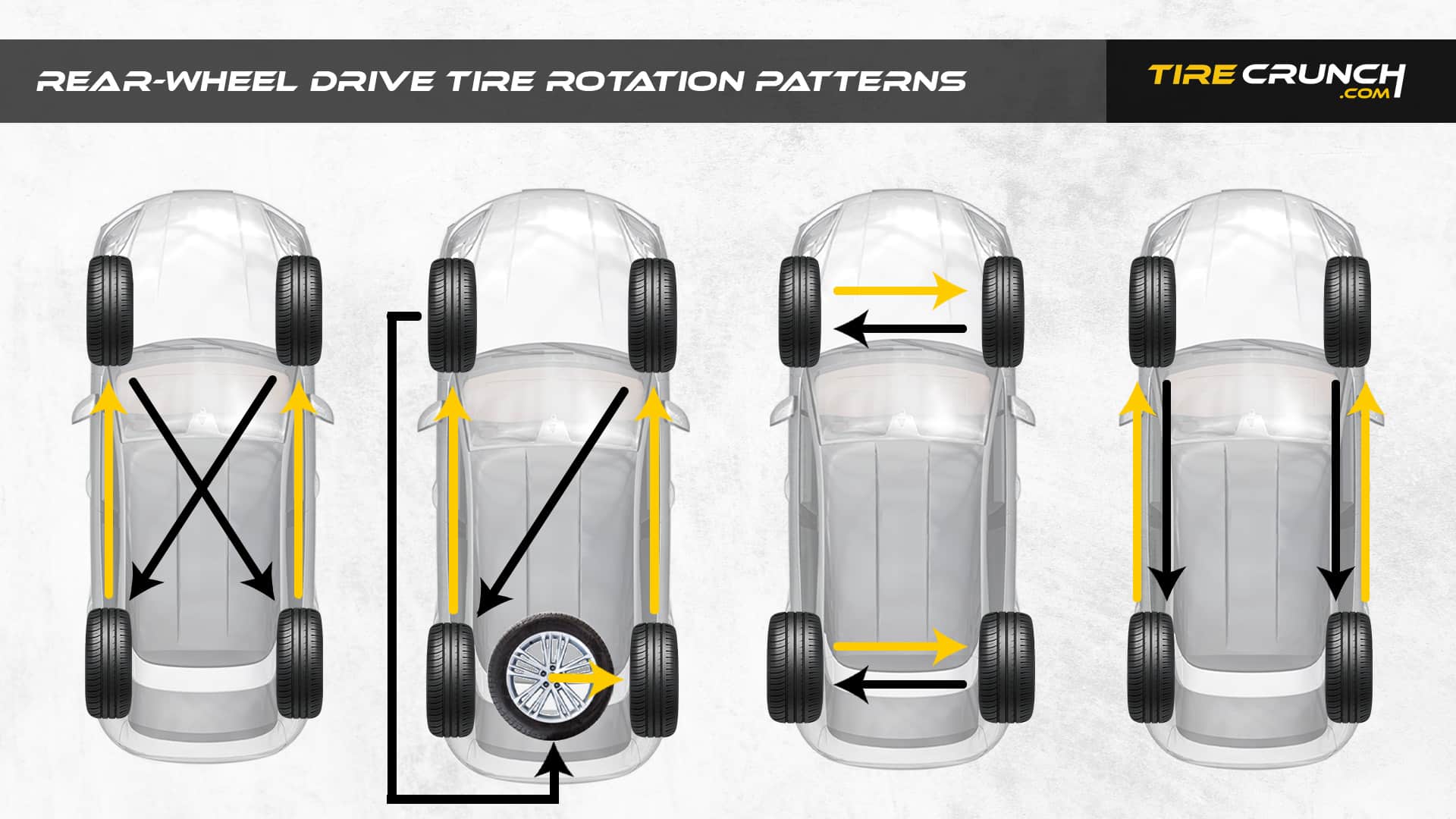
Regular tire rotation is a crucial preventative maintenance measure to ensure that your tires wear evenly. By rotating your tires every 5,000 miles, each tire gets a chance to spend time at every wheel position on your vehicle.
This promotes even wear across all tires and maintains proper handling balance, while also maximizing tire life and tread warranty coverage. Furthermore, if your tires wear out as a set, you can replace them all at once instead of having to match up an existing pair.
Tire rotations should be done in accordance with the owner’s manual or as established by the tire industry and diagrams can help guide you if necessary.
Important! Before deciding on a tire rotation pattern, it’s important to determine whether your vehicle is equipped with directional or non-directional tires.
Directional vs Non-Directional Tires
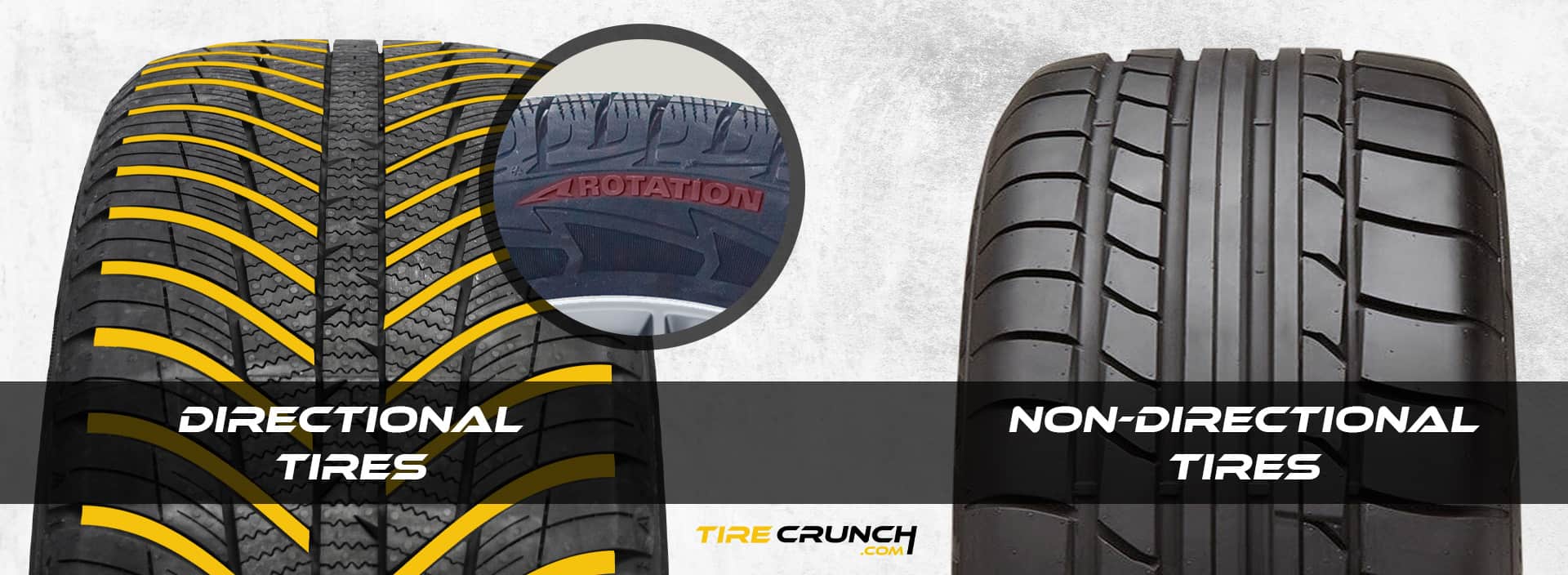
Rear Wheel Drive Tire Rotation: Non-Directional Tires
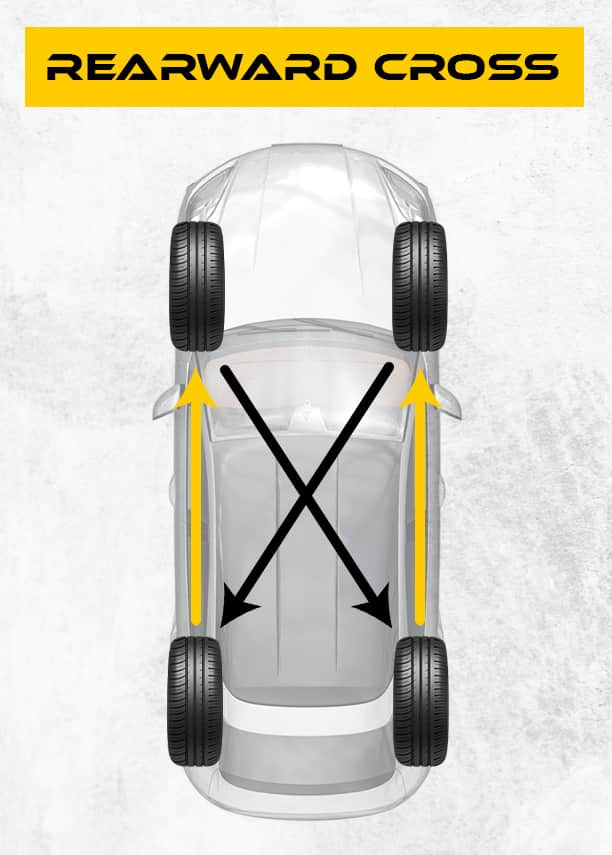
Rearward Cross
Rear tires are moved to the forward axle and kept on the same side of the vehicle while the front tires are moved to opposite sides of the rear axle.
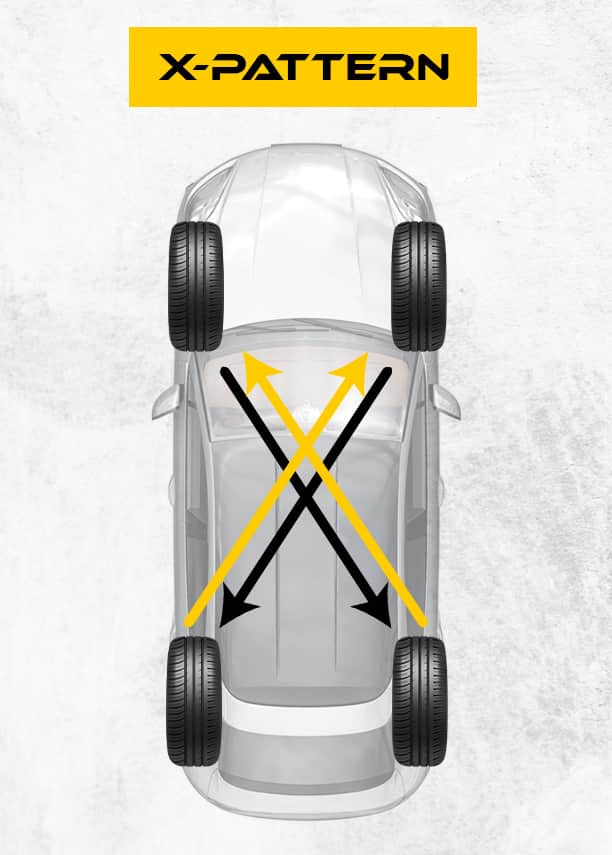
X-Pattern
This pattern involves moving all four tires to opposite axles and sides so that each tire has been moved diagonally from its original position.
Rear Wheel Drive Tire Rotation: 5 Tire Rotation
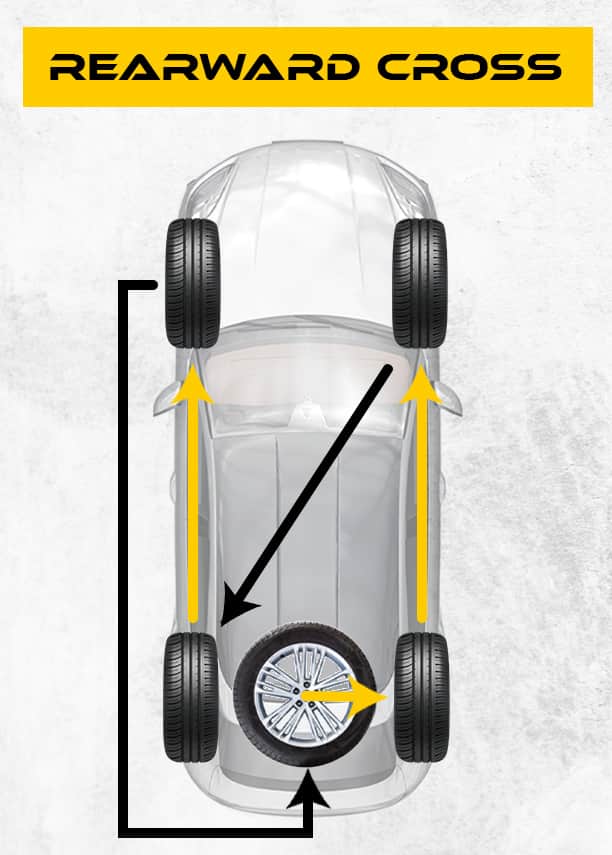
Rearward Cross
The rear axle tires move to the front axle. The spare tire is repositioned to the right side of the rear axle. The right front tire is shifted diagonally to the left side of the rear axle. The left front tire becomes your new spare tire
Rear Wheel Drive Tire Rotation: Directional Tires
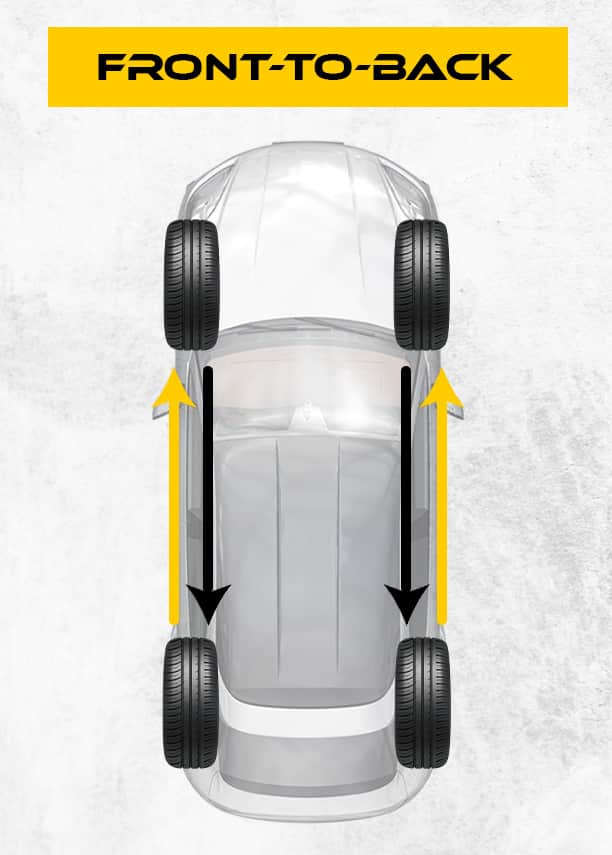
Front-To-Back
The front-to-back tire rotation pattern involves moving the front tires straight back and the rear tires straight forward, without changing their sides.
Differently-Sized Directional Tires
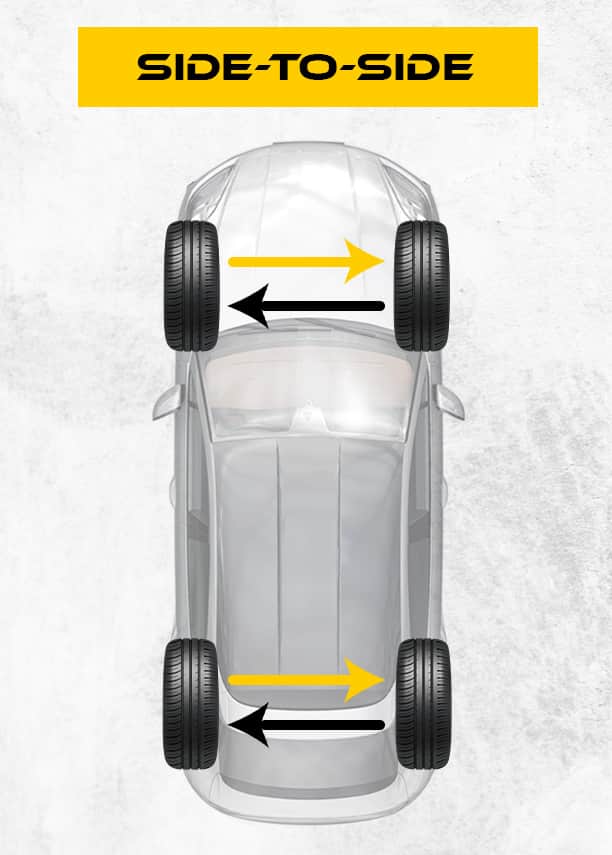
Side-To-Side
The side-to-side tire rotation pattern is a type of tire rotation where the tires are repositioned from side to side. This type of tire rotation is most useful when dealing with vehicles equipped with different-sized non-directional tires and wheels on the front axle compared to the rear axle.
Why Is Tire Rotation Important?
Tire rotation is an important part of vehicle maintenance that helps ensure the longevity and optimal performance of your tires. Here are some reasons why tire rotation is important:
